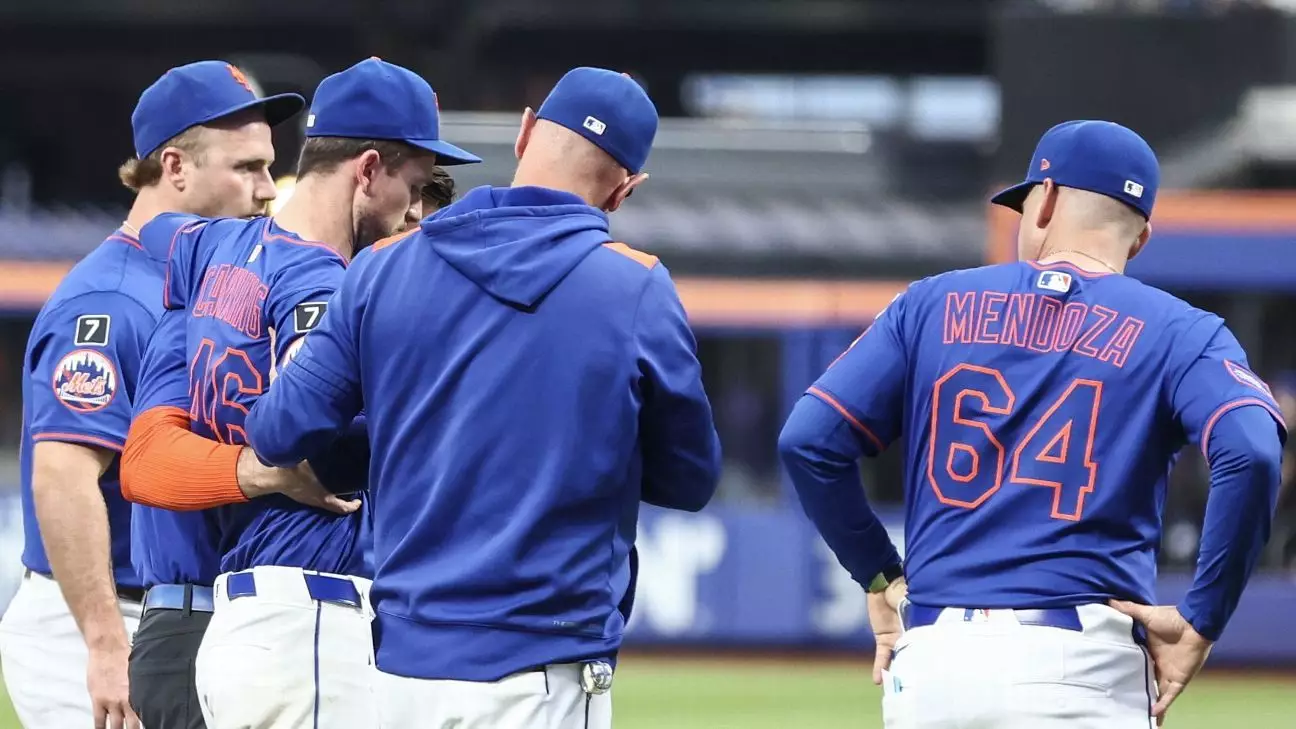The New York Mets’ pitching woes have deepened with an unfortunate setback involving Griffin Canning, who likely sustained a severe Achilles injury in a recent game against the Braves. This incident came at an inopportune time when the Mets desperately need stability in their rotation. Canning’s injury occurred during a seemingly routine play, underscoring the unpredictable nature of baseball injuries that can derail a season. The immediate reactions—from his visible pain on the field to the sobering assessments by coach Carlos Mendoza—paint a grim picture for the team.
What’s particularly distressing about this injury is not just the physical toll on Canning but its ripple effect on a Mets bullpen and rotation already stretched thin. Canning, who has shown commendable improvement this season with a 7-3 record and a 3.77 ERA, had become a key asset, marking a stark turnaround from his struggles with the Angels last season. This progress made the injury not only a blow to the pitching staff but also to the team’s morale, as it deprived the Mets of one of their more consistent performers.
The Mets’ Rotation in Crisis
The broader context surrounding Canning’s setback reveals a deeper malaise within the Mets’ pitching corps. The team has been grappling with a parade of injuries to its starting pitchers, which has crippled their competitive edge. Kodai Senga, the team’s ace, is sidelined due to a hamstring strain, and Tylor Megill has been out with an elbow sprain. The potential loss of Sean Manaea, who now requires additional rehab due to a bone chip in his elbow, compounds the issue further. The constant shuffle and rehabilitation uncertainty reflect not just bad luck, but perhaps underlying management and conditioning challenges that need addressing.
This cascade of injuries has translated directly to the Mets’ recent struggles on the mound and on the scoreboard, evidenced by their 4-10 record during this difficult stretch. Such a record is hardly reflective of the team’s potential or expectations, indicating that the pitching voids have a profound impact on performance and outcomes. It begs the question of how the Mets’ staff and front office are prepared to handle such persistent setbacks, especially during a crucial phase of the season.
Implications for Team Dynamics and Strategy
Beyond the statistics and injury reports lies the less tangible, yet equally significant, disruption to team chemistry and strategy. A starting pitcher isn’t merely a player slot; they anchor the rotation, influence bullpen usage, and stabilize game planning for the entire team. Losing key starters like Canning in quick succession forces the Mets into reactive decision-making, relying on relievers, minor league call-ups, or hastily assembled trades—none of which guarantee consistency.
Furthermore, player morale takes a hit when injuries become a recurring theme. The visible distress shown by teammates, such as Pete Alonso’s empathetic remarks about Canning, reflects a clubhouse struggling to stay positive amid adversity. This emotional state can subtly erode focus and confidence, making recovery on the field even more challenging.
From a front office perspective, these circumstances put a magnifying glass on roster depth and long-term planning. While reinforcements like Frankie Montas returning from injury provide some respite, the Mets must consider whether their development pipeline and medical management protocols are robust enough to prevent or mitigate such crises. The continuous stream of injuries may signal deeper systemic issues that require not just short-term fixes but strategic overhaul.
Looking Forward: Challenges and Opportunities
While the situation appears bleak, it also presents an opportunity for the Mets to reassess and recalibrate their approach. Injuries, though unfortunate, are intrinsic to professional sports; how a team responds—through nurturing young talent, optimizing medical support, and strategic acquisitions—can define their trajectory. The Mets now face the challenge of maintaining competitiveness while navigating a patchwork rotation, where each start and relief appearance becomes a test of resilience.
In this light, Canning’s injury is both a setback and a catalyst. It forces the Mets to innovate and adapt, perhaps accelerating the development of prospects or expanding their trade options. Simultaneously, it offers a moment for introspection about injury prevention and the physical demands placed on pitchers in the era of modern baseball. How the organization responds in the coming weeks will significantly influence not just this season but the foundational strength of the team moving forward.
In essence, the Mets’ pitching injury crisis embodies more than a series of unfortunate incidents; it reflects deeper vulnerabilities that must be addressed with urgency and foresight. The road ahead is mentally and tactically demanding, inviting a hard, honest reckoning with how the team manages health, talent, and expectations amid adversity.

